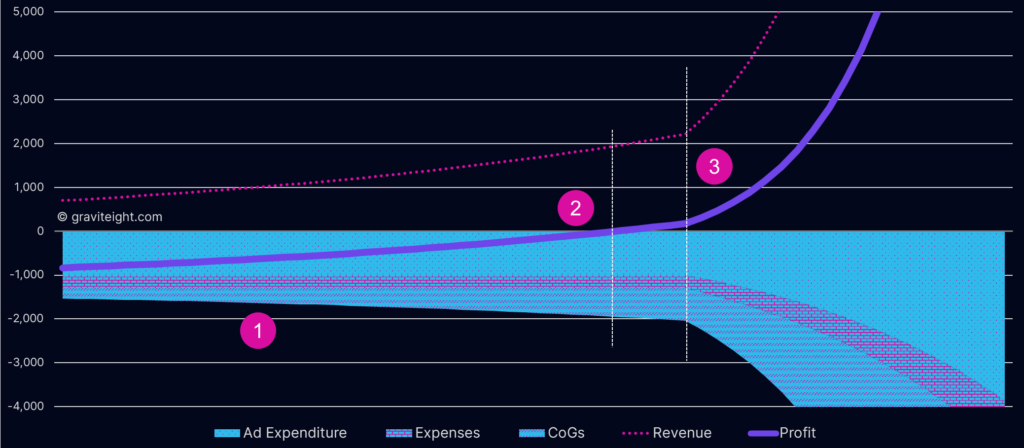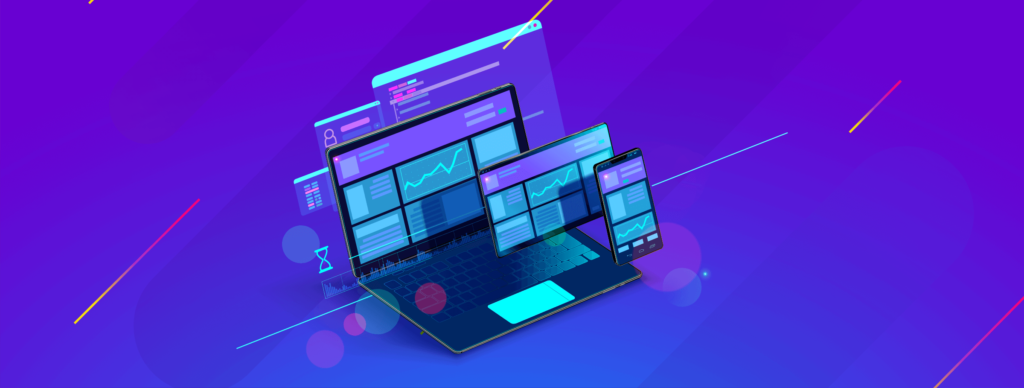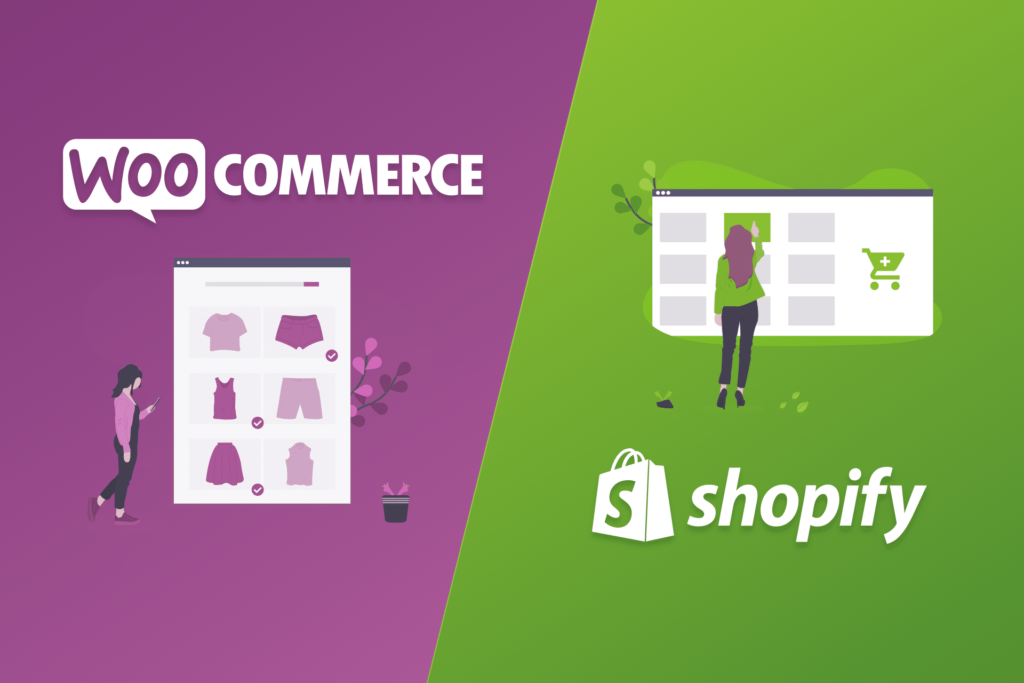Why is eCommerce said to be profitable yet many lose so much money?
How much does one need to do or spend to reach a point where it actually becomes profitable?
The simple fact is most businesses, if not all, have a breakeven point. The same is true in eCommerce.
The breakeven point is known as the point in time at which all the losses up to the point have been recovered, and after the point, profits should start coming in. That’s to say, IF and ONLY IF the business continues on a positive trajectory.
Let’s break it down to understand this phenomenon.
We like visualising concepts. This graph (albeit theoretical and oversimplified) depicts an example of the trajectory of an eCommerce business.

- Most businesses get stuck here This can truly be the hell where all potentially great businesses perish.
Few can say for sure how long this stage will last, and it could be weeks, months, or even years, depending on the type of business.
The same is true for eCommerce. Many newcomers complain often about how unprofitable it is, how there is no money to be made, or how they keep losing money after running ads, and not getting sales even after spending thousands.
In fact, this stage may not even always be on a constant increasing trend. Many variables are at work so anything can happen.
- Breakeven point
The sun shines again.
The losses have now just been covered by all the recent “more profitable” sales.
Still, it’s not certain enough yet whether this is just a fluke or if it is around to stay.
My advice at this point is usually to sustain the previous strategy and fine tune things to ensure that it isn’t luck, before diving into scaling big.
- Rapid scaling begins
Once we’ve confirmed that the breakeven is solid ground, we can begin rapid scaling.
When scaling, we have to ensure that the backend is ready to handle the pressure from a significantly increased ad spend, and thus, more traffic.
When you begin to scale, your business is beginning its critical mass stage. It has to be nurtured in order for it to be successful. Otherwise, many major slip ups can occur during this stage. This could hurt your business in several ways, such as customer complaints of slow or non-delivery, website slowdown, a large percentage of lost customers and abandoned carts, etc. All of these could negatively impact the reputation of your store.
There are plenty of considerations for having a sustainable back end, such as customer support, supply of products in the right local warehouses, server load, ad management, cashflow balancing etc.
Without a strong foundation, chargebacks may easily occur, costing you time, money and stress unnecessarily.
Even if the customer is being ridiculous, or you may have the proof that you are not wrong, the banks may still prefer to side with the customer for reasons out of our control.
So now we understand what the breakeven point is, but…
Why does this phenomenon happen?
Most ad networks, especially those like Facebook, implicitly require you to invest a sum in building a certain audience type so that the ad platform can understand who is most likely to convert on your store.
This all works in a black box that is too much for an article right now, but am happy to share with you the more technical aspects of their machine learning algorithm over a chat some time 🙂
By building data, you allow the machine learning algorithms to build more and more credible data to serve you more of what works.
As the data quality improves over time, your ad costs will reduce, driving more meaningful traffic to your store.
As such, over time, your sales will become more profitable and so you’ll keep more profits from what you sell.
How can you get to breakeven sooner?
It can take some time and budget to figure out that golden audience for your eCommerce, but it may cost even more time if you do not have a solid process for testing.
Hiring an expert who is familiar with the testing process can significantly boost your results, driving the best converting traffic to your store.
More importantly, you’ll want to have transparency with the process, so you know how your budgets are allocated throughout the testing process.
Do you need a lot of money to start an eCommerce?
While most dropshipping gurus will tell you you only need $300 to get started, I’ll let you know that the hard truth is: the more funds you have when you begin, the higher your chances of success.
Your starting fund (aka seed fund) acts as a runway for your business to take off. The longer it takes for lift off, the more runway it requires.
While being on the “runway”, your business is expected to figure out how to test the markets to give you the best product-market fit, while spending your ad budgets effectively.
It will be important to stay lean at this stage, and select only the people you need to make your business goals a reality.
This runway concept is explained in further detail by Eric Ries in The Lean Startup. I highly recommend this book for new business owners.
No need to feel your way around in the dark.
Learning the process for testing your market can be time consuming and highly-skilled task requiring a team of seasoned experts in different areas.
With our help, you can speed things up and set realistic, reachable milestones with experienced advice tailored for your business.
Gain access to an experienced technical team who can execute your visions on your behalf.
It’s free to chat, we’re always interested to speak with other business owners, so don’t feel obliged otherwise!
How soon can you reach YOUR breakeven point?







